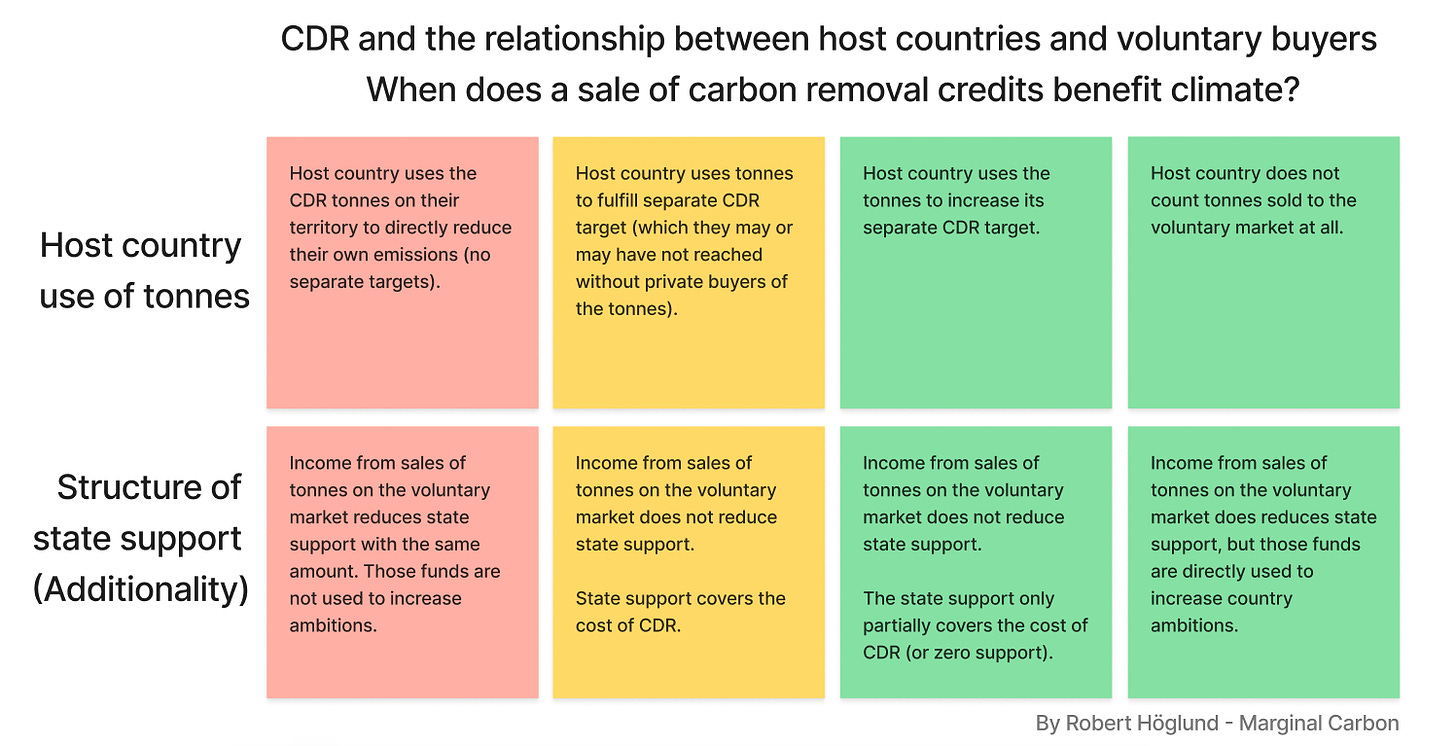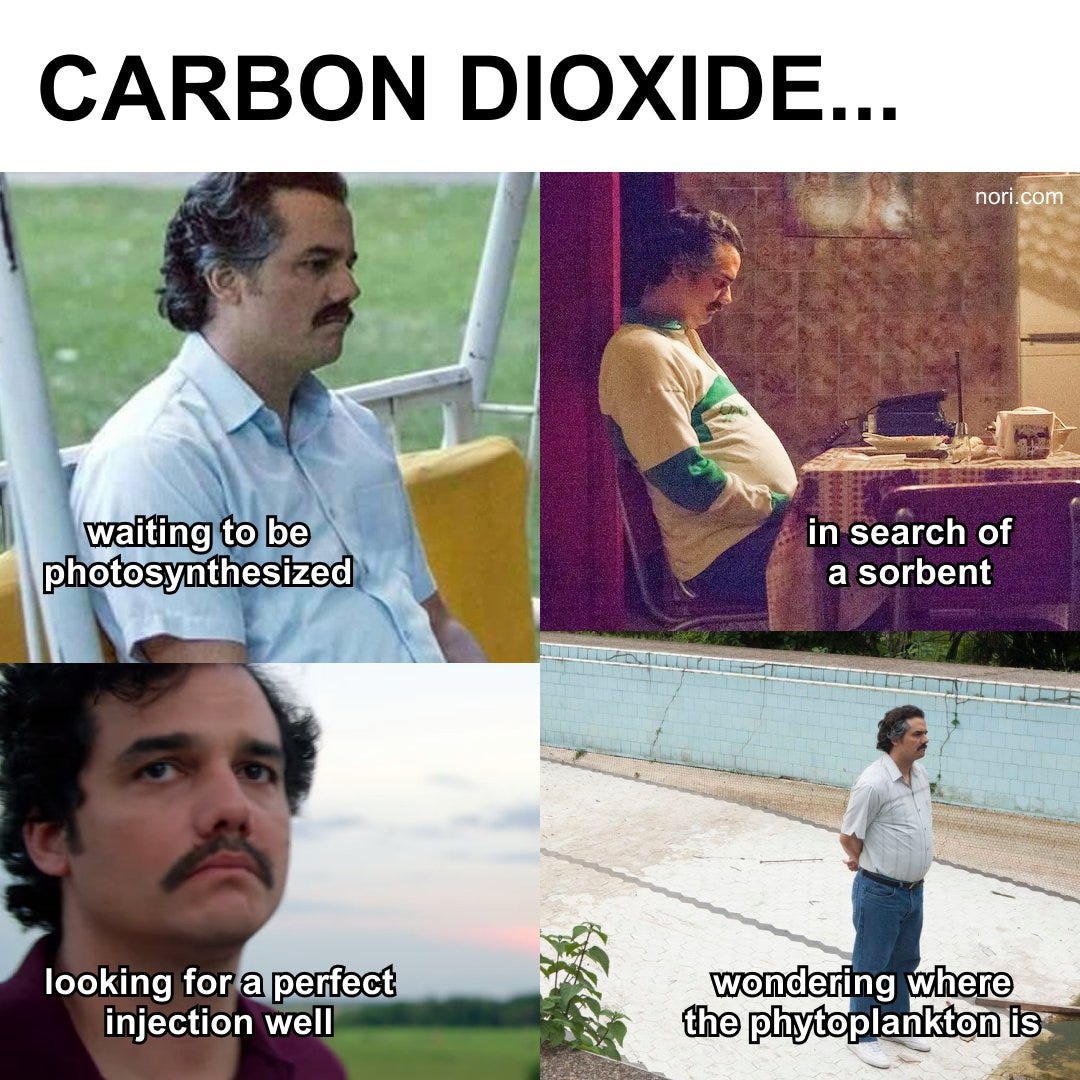The Carbon Lowdown #29
Welcome to The Carbon Lowdown! A fortnightly newsletter from Supercritical.
🍃 Carbon removal
What is happening in the world of carbon removal?
📣 Shoutout to my ex (ante & ex post)
Acronyms litter the voluntary carbon market. One that’s worth deciphering is the difference between ex post & ex ante credits.
Ex ante is latin for “before the event”. In the offsetting world, this refers to buying a carbon credit before it has been retired. Buying ex ante credits is critical to scaling the carbon removal industry as it provides producers with the necessary financing to scale their carbon removal projects.
Ex post is latin for “after the event”. In the offsetting world, this refers to buying a carbon credit after it has been retired. Ex post credits offer an after-the-fact analysis of effective carbon removal, giving solid proof of realised climate effects.
Given the carbon removal market’s nascency, a lot of projects are selling ex ante credits in order to scale their operations. Currently, 2.6% of durable removal credits (biochar and above) are ex post.
All ex ante will become ex post at some point in the future and both lead to carbon being removed from the atmosphere, just over different timelines. So, what should be in your carbon removal portfolio? We believe a blend of both is a great option.
👀 Double counting credits
A recent article on Marginal Carbon explores the hotly debated topic - double counting between company and country. This has been partly sparked by the purchase of 2.7million tonnes of carbon removal credits by Microsoft from Danish BECCS company Ørstedt (the Danish government is supporting the same project). More recently, the release of the VCMI Claims Code of Practice (discussed in The Carbon Lowdown #27) highlighted the potential for double counting between country and company as well.
Marginal Carbon’s article concludes if a company contributes to a removal purchase, the host country should either not count the tonnes of carbon removed against their national emissions or increase their climate targets due to the carbon removal. If their financial support towards carbon removal reduces as a result of a carbon removal sale to the private market, the sale does not benefit the climate additionally. This brings up the question, should countries have separate carbon removal targets to emission reduction targets in order to account for this?
🥕 Not just vegetables losing their best before date
The world’s leading platform for carbon removal credits, Puro.earth, is eliminating expiry dates from their CO2 Removal Certificates (CORCs), citing that the removal of the expiry period won't compromise the positive climate impact that CORCs deliver.
Until this change, CORCs that had not been retired would expire after 5 years from the issuance date. This would 'limit the vintages', meaning there would only ever be up to 5 years of vintages for a project available, constraining the supply. This change will provide greater flexibility and value for CORCs and encourage greater liquidity in the market. This modification applies to all Puro Standard CORCs that were not yet retired as of June 1st, 2023.
🗺 Putting carbon on the map
A couple of maps have been released chronicling various carbon projects around the world:
The World Bank has released a graphic map showing 70 national carbon pricing initiatives around the world. Neat to see the UK has the highest price per tonne on the Emissions Trading Scheme (ETS)!
Our friends at cdr.fyi have released an interactive carbon removal actors map. Very cool to see this laid out so clearly
🔗 🚗 Mini links: Carbon removal
🗣 Sifted released this useful carbon removal explainer
🌊 WRI has released a summary of marine CO2 removal options and their potential report
💰 Airminers has launched their Kiloton fund for funding carbon removal start-ups. The Kiloton Fund has a total of $200k for buying carbon credits from removal startups. 20 teams will each receive $10,000 in funding
💯 Norrsken has released their Impact100 list of the top most promising start-ups to fix the future, great to see some carbon removal solutions on there!
🌎 Climate and Net Zero
What is happening in the world of climate and net zero?
📉 The numbers are in. How did 2022 do for climate targets?
The Science Based Targets initiative has published its monitoring report, highlighting huge growth in the uptake of SBT by businesses around the world. A few key findings show:
Japan had the most companies setting targets in 2022, followed by the UK & US
76million tonnes of CO2 committed to be reduced through science-based targets
79% of all companies with science-based targets were 1.5°C-aligned for scopes 1 and 2
The number of companies setting targets worldwide increased by 87% year on year
Over one-third (34%) of the global economy by market capitalisation had science-based targets or committed to setting targets by the end of 2022
🌊 World water crisis
A quarter of humanity faces extreme water stress – and it’s poised to get worse with an additional 1 billion people expected to be affected by 2050. The world is facing an “unprecedented water crisis” driven by soaring demand and the accelerating climate crisis, according to the World Resources Institute’s Aqueduct Water Risk Atlas published on Wednesday.
Globally, demand for water has more than doubled since 1960, and the report projects that it will rise a further 25% by 2050. And, under it all, climate change is worsening the crisis. Even if the world manages to limit warming to 1.3 to 2.4 degrees Celsius above pre-industrial levels – an “optimistic” scenario according to the UN Intergovernmental Panel on Climate Change – an additional 1 billion people are expected to live in extremely high water stress conditions by 2050, according to the report.
“Water is how climate change most directly impacts people around the world,” said Charles Iceland, global director of water with WRI’s Food, Forests, Water, and the Ocean Program.
More action is needed according to the report, to prevent a full-on crisis. These include nature-based measures, such as preserving and restoring wetlands and forests, farmers adopting more efficient watering techniques such as drip irrigation, and policymakers focusing on energy sources that don’t rely so heavily on water, such as solar and wind.
🔗 🚗 Mini links: Climate
🔥 Check out this sobering graph showing emissions from Canadian wildfires
🏴 CreditNature has won government backing to kickstart biodiversity credits in Scotland
🥵 IPCC has shared a graph highlighting how heatwaves will increase in occurrence under climate change
🚗 Sales of battery electric vehicles rose 88% by year on year comparison last month
💨 Soaring costs for offshore wind…prices have taken an upturn
🔦 Carbon removal project spotlight
A fun and innovative carbon removal project to highlight
💡 Reverse Carbon, a biochar producer who is establishing the first ‘biochar repository’ of its kind. Reverse Carbon takes biochar and buries it in old mining sites as part of an eco-restoration of mines in Kenya. Their first site will remove 1,500tCO2e!
This newsletter is carefully crafted by Fi Watters and Tom Previte
Fi is a Climate Consultant at Supercritical with a MSc in Climate Change from King's College.
Tom specialises in selling carbon removal at Supercritical and hosts The Carbon Removal Show podcast.






